Cervical Flexion And Extension
Table of Contents
What is Cervical Flexion And Extension?
Cervical flexion and extension refer to the movements of the neck, specifically the forward and backward bending of the cervical spine (cervical vertebrae). Here’s a breakdown of each move:
- Cervical flexion: This movement involves bending the neck forward and bringing the chin to the chest. It mainly occurs in the joints between the individual cervical vertebrae, allowing the neck to bend or bend forward. Cervical flexion is usually noticed when you look down at your feet or bring your chin closer to your chest.
- Cervical extension: Unlike flexion, cervical extension involves bending the back of the neck and lifting the chin up. It occurs when the cervical vertebrae protrude or curve backward, resulting in increased curvature of the neck. Cervical dilation is usually seen when you look up at the sky or tilt your head back.
- Both cervical flexion and extension are necessary to maintain neck mobility and function. They allow us to perform various actions, such as looking in different directions, tilting our heads, and maintaining proper posture. However, it is important to note that excessive or repetitive movements outside the normal range of motion can potentially strain neck muscles or cause other problems. If you experience any discomfort or concern about cervical movements, it is recommended that you consult a doctor for accurate assessment and guidance.
Cervical Flexion
What is Cervical Flexion?
Cervical flexion refers to the forward flexion or flexion movement of the neck. This involves flexing the cervical spine, which is the part of the spine that includes the vertebrae in the neck.
During cervical flexion, the chin moves toward the chest, resulting in arching or forward bending of the neck. This movement occurs mainly in the joints between the individual cervical vertebrae, allowing neck flexibility and range of motion.
Cervical flexion is a natural and necessary movement that we use in our daily life. For example, when we look at something on the ground, read a book, or perform tasks that require bending the head forward, cervical flexion occurs.
However, it is important to maintain proper posture and avoid excessive or prolonged cervical flexion as this can cause muscle strains, neck pain, or other discomfort.
Cervical Flexors Muscles
The cervical flexors are a group of muscles located in the anterior (front) part of the neck. They play a crucial role in cervical flexion movement and neck stabilization. Here are some of the most important cervical flexor muscles:
- Sternocleidomastoid (SCM): The SCM is a large muscle on each side of the neck. It originates from the breastbone (sternum) and clavicle (collarbone) and joins the sternum of the temporal bone behind the ear. When both SCMs contract, they bend the neck forward. If only one SCM contracts, it turns and tilts its head to the opposite side.
- Scalene muscles: The scalene muscles consist of three pairs of muscles: the anterior scalene, the middle scalene, and the posterior scalene. They are located deep in the SCM on the sides of the neck. Although the main function of the scalene muscles is to assist in breathing, they also assist in the flexion of the cervix.
- Longus Colli: The Longus Colli muscle is a deep muscle located at the front of the neck. It runs vertically along the front of the cervical spine. The Longus Colli muscles work together to flex the cervical spine, allowing the neck to bend forward. 4. Rectus capitis Anterior: The rectus capitis anterior is a small muscle located deep in the neck, near the midline. It runs vertically from the base of the skull to the upper cervical vertebrae. Its main function is to help the cervix flex.
- Rectus capitis lateralis: The rectus capitis lateralis is another small muscle located deep in the neck, to the side of the anterior rectus capitis. It runs vertically from the base of the skull to the upper cervical vertebrae. It also helps with cervical flexion.
These muscles work together to bend the neck, allowing us to perform movements such as looking down, bringing our chin to our chest, or performing activities that require us to tilt our head forward.
Range Of Motion Of Cervical Flexion
- The cervical flexion range of motion refers to the degree of forward flexion or flexion that the neck can achieve. It measures how far the chin can be moved toward the chest. The range of motion varies from person to person and can be influenced by things like muscular strength, flexibility, and any underlying illnesses or injuries.
- Usually, the average range of motion of cervical flexion is about 50-60 degrees. This means that in an optimal situation, the chin can be lowered approximately parallel to the collarbone. However, it is important to note that range of motion can be affected by many factors and individual variation is common.
- The cervical flexion range of motion is often assessed during a physical exam or as part of a neck evaluation. Health professionals can use specific measurements or visual assessments to determine the degree of flexion and compare it to the expected or normal range. This evaluation can help identify limitations or abnormalities in the range of motion and guide further evaluation or treatment as needed.
- To maintain a healthy range of motion, it is important to maintain the flexibility and strength of the cervical flexor muscles. Regular stretching and neck range of motion exercises, when properly targeted, can help improve or maintain cervical flexion range of motion.
To check your cervical flexion range of motion, you can do a simple measurement called the “chin-chest test.” This can be done as follows.
- Find a quiet, comfortable area where you can complete the assessment without distractions. 2. Sit in a chair or stand with proper posture, keeping your back straight and your shoulders relaxed.
- Begin by looking straight ahead with your head in a neutral position.
- Slowly and carefully lower your chin towards your chest, trying to bring your chin as close to your chest as possible without causing pain or discomfort. Maintain a straight back during the motion.
- Keep your neck bent forward and use a ruler or tape measure to measure the distance between the tip of your chin and the top of your sternum (the notch at the base of your throat).
- Record the measurement in centimeters or inches. This measurement shows your cervical flexion range of motion.
- Return the head to the starting position in a neutral position.
By measuring the distance between the chin and sternum, you can estimate the range of motion achieved during cervical flexion. It is important to remember that this is a basic measurement and does not provide a comprehensive assessment.
Test Of Cervical Flexion
The cervical flexion test is a special assessment used to assess a range of motion and reproduce symptoms associated with cervical flexion. This can help identify limitations or abnormalities in cervical flexion and provide valuable information for diagnostic purposes. The cervical flexion test is usually performed as follows:
- Positioning. Start with the person being tested sitting in the correct position on a chair or stool and make sure their back is straight and their shoulders are relaxed.
- Starting Position: Instruct the person to hold their head in a neutral position, looking straight ahead.
- Performing the test: Ask the person to slowly and carefully lower their chin to their chest, trying to bring their chin as close to their chest as possible without causing pain or discomfort. It is important to emphasize slow and controlled movement.
- Caution: As the person performs cervical flexion, observe their movement and note any restrictions or asymmetry. Look for signs of pain or discomfort, such as facial expressions or verbal cues.
- Increasing symptoms: Ask the person during cervical flexion if they have specific symptoms, such as pain, numbness, tingling, or other sensations. If symptoms recur, note their location and intensity.
- Measure range of motion: As an optional step, you can use a ruler or tape measure to measure the distance between the top of the chin and the top of the sternum, as mentioned in the previous answer. This measurement provides an objective assessment of the range of motion achieved during cervical flexion.
Cervical flexion testing should be performed carefully and at a level that is appropriate for the individual to avoid exacerbating existing symptoms or causing unnecessary discomfort.
Exercise For Cervical Flexion
Here’s an exercise that can help improve cervical flexion range of motion:
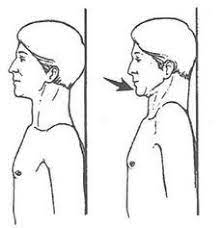
- Sit or stand in the correct position, keeping your back straight and your shoulders relaxed.
- Start by looking straight ahead, keeping your chin parallel to the floor.
- Gently pull your chin in, as if creating a double chin. Imagine trying to bring your neck closer to the base of your skull.
- Hold the position for 5-10 seconds and feel a slight stretch in the neck.
- Release the jaw and return to the starting position.
- Repeat the exercise 10-15 times.
Important tips:
- Keep the movement slow and controlled during the exercise. – Focus on the quality of movement and maintain a proper position. – Avoid tilting your head back or straining your neck muscles.
Chin-ups are a safe and effective exercise to improve cervical flexion and strengthen the deep neck flexor muscles.
2. Cervical flexion Exercise:
- Begin by sitting in the correct position on a chair, keeping your back straight and your shoulders relaxed.
- Place your hands behind your head, interlock your fingers, and gently press your head. Elbows should be pointed forward.
- Your chin should be parallel to the floor when you begin by gazing straight ahead.
- Slowly and carefully press the chin to the chest, keeping the position of the hands supporting the back of the head. Focus your eyes on your chest as you move.
- Hold the position for 5-10 seconds and feel a gentle stretch in the back of your neck.
- Slowly return to the starting position, hold your head up, and repeat the exercise 10-15 times.
Important tips:
- Perform the exercise in a controlled manner, avoiding sudden or jerky movements. – Focus on quality of movement instead of quantity. – Don’t squeeze your hands too much behind your back. They exist to support a movement, not to force it.
This exercise helps stretch and strengthen the muscles involved in cervical flexion. It also promotes proper neck alignment and mobility.
3. Seated Neck Flexion Stretch:
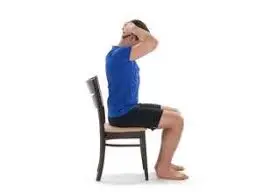
- Sit in the correct position on the chair and make sure your back is straight and your shoulders are relaxed.
- Palms facing down, place your hands on your thighs.
- Your chin should be parallel to the floor when you begin by gazing straight ahead.
- Slowly and carefully lower your chin toward your chest, allowing your head to tilt forward.
- When you lower your chin, you should feel a gentle stretch in the back of your head and the base of your skull. Hold the stretch for 15-30 seconds, maintaining a pleasant tension.
- In an upright position, return the head to the starting position.
- Repeat the stretch 3-5 times. Important tips:
- Do the exercise in a controlled manner, and avoid sudden or jerky movements. Pay attention to movement quality rather than quantity.- Inhale and exhale deeply as you ease into the stretch.
The seated cervical flexion stretch helps lengthen and tighten the muscles involved in cervical flexion, which increases the range of motion and flexibility.
Special Test For Cervical Flexion
There are a number of special tests that health professionals can use to evaluate cervical flexion and related conditions. Here are some examples:
- Modified head flexion test (also known as the Spurling test):
This test helps evaluate compression or irritation of the cervical nerve root. It specifically assesses whether cervical flexion repeats or worsens symptoms radiating down the arm, such as pain, tingling or numbness. This can be done as follows.
- The Person is sitting or standing.
- The inspector stands behind the person and tells him to stretch his neck back (lookup).
- The examiner then gently presses down on the top of the subject’s head, facilitating cervical flexion while maintaining head extension.
- The person is asked to report any symptoms experienced during the test, such as pain, tingling, or numbness.
If symptoms recur or worsen during cervical flexion, this may indicate nerve root compression or irritation.
2. Cervical flexion-rotation test (also known as cervical flexion-rotation test):
This test evaluates the mobility of the cervical spine, especially rotation, and can help identify limitations or abnormalities in cervical flexion with rotation. This can be done as follows.
- The subject sits with a straight back and relaxed shoulders.
- The inspector advises the person to bend the neck forward as much as possible.
- In a flexed position of the cervix, the person is asked to turn the head as far as possible.
- The examiner observes the range of motion achieved during cervical flexion during rotation and notes any limitation or asymmetry. The cervical flexion-rotation test is commonly used to evaluate conditions such as cervical joint dysfunction or restricted range of motion.
Cervical Extension
What is Cervical Extension?
Cervical extension refers to the neck being bent backward or extended. This involves bending or bending of the cervical spine, which is the part of the spine that includes the vertebrae in the neck.
As the cervical extension occurs, the head and neck move backward, causing the chin to lift. This movement occurs primarily at the joints between the individual cervical vertebrae, allowing the neck to expand or curve backward.
Cervical extension is a natural and necessary movement that we use in various activities. For example, when we look up at the sky, tilt our head back, or perform tasks that require us to bend our head back, cervical extension is involved.
It is important to maintain the correct position and avoid excessive or prolonged stretching of the cervical area, as this can strain the neck muscles or cause discomfort. In addition, individuals with certain medical conditions, such as cervical spondylosis or joint dysfunction, may experience restriction or pain from cervical dilation.
Cervical Extensors Muscles
The cervical extensors are a group of muscles located in the dorsum (back) of the neck. These muscles play a crucial role in lengthening the cervical area and maintaining neck stability. Here are some of the most important cervical extensor muscles:
- Trapezius muscle: The trapezius muscle is a large muscle that runs from the base of the skull along the back of the neck and down the middle of the back. It helps to stretch the head and back of the neck and make other movements like shrugging.
- Splenius capitis: Splenius capitis is a deep muscle located on both sides of the neck. It originates from the lower part of the skull and is located on the upper cervical vertebrae. This muscle helps extend and rotate the head and neck.
- Semispinalis capitis muscle: Semispinalis capitis is a deep muscle on both sides of the back of the neck. It involves several vertebrae and helps extend and rotate the head and neck.
- Erector Spinae: The erector spinal muscle group runs along the spine and consists of three main muscles: iliocostalis, longissimus, and spinal. Although these muscles are primarily responsible for maintaining an upright posture and extending the spine, they also help extend the cervix.
- Longissimus capitis muscle: The longissimus capitis muscle is a long and deep muscle on both sides of the neck. It extends from the top of the back to the base of the skull. Its action involves extension and rotation of the head and neck.
These muscles work together to extend the head and neck, allowing us to look up, tilt our head back, and maintain proper posture. It is important to maintain the strength and flexibility of the cervical extensor muscles to maintain a healthy range of motion and prevent problems with neck function.
Range Of Motion Cervical Extension
Backward neck extension exercises also vary from person to person and can be affected by many factors, including flexibility, muscle strength, and underlying medical conditions or injuries.
On average, the normal range of motion for a cervical strain is about 60-75 degrees. This means that in an optimal scenario, the head and neck can be stretched back to some extent.
Again, it’s important to note that individual variation is common, and some people may have more or less movement as their cervix dilates. Factors such as age, previous injuries, or underlying medical conditions can also affect range of motion. Maintaining the flexibility and strength of the cervical extensor muscles is critical to maintaining a healthy range of motion of the cervical extensor muscles. Regular stretching, strengthening exercises, and maintaining good posture can help improve or maintain range of motion.
You can check the range of motion of cervical dilatation by doing a simple measurement called the chin-ceiling test. This can be done as follows.
- Find a quiet, comfortable area where you can complete the assessment without distractions.
- Sit in a chair or stand with proper posture, keeping your back straight and your shoulders relaxed.
- Begin by looking straight ahead with your head in a neutral position.
- Slowly and carefully tilt your head back, making your chin move towards the ceiling. Try to stretch your neck back as far as possible without causing pain or discomfort. Keep your back straight during the movement. 5. Keeping your neck straight, use a ruler or tape measure to measure the distance between the top of your chin and the bottom of the ceiling or any reference point directly above you.
- Save the measurement in centimeters or inches. This measurement shows your range of motion as your cervix dilates.
- Return the head to the starting position in a neutral position.
By measuring the distance between the chin and the roof, you can estimate the range of motion achieved during cervical stretching. This measurement provides an objective assessment of your range of motion.
Test Of Cervical Extension
A test commonly used to assess cervical extension is called “cervical extension range of motion.” This is usually done as follows.
- Position: The person being tested sits or stands normally in the correct position, making sure that their back is straight and their shoulders are relaxed.
- Starting Position: Instruct the person to look straight ahead with the head in a neutral position.
- How to do the test: Ask the person to slowly and gently tilt their head back, allowing the chin to move up and the neck to reach back as far as possible. Emphasize controlled movement and ask them to go only as far as a comfortable stretch without pain.
- Observation and measurement: As the person performs cervical dilation, observe their movement. Note the angle at which the head is extended back and any restrictions or asymmetry. You can use a goniometer, a special device for measuring joint angles, to measure a range of motion in degrees. Alternatively, you can visually estimate the range or compare it to a normal range of motion.
- Return to neutral position: After assessing the range of motion, instruct the person to return the head to the starting position in a neutral position.
During the test, it is important to ensure that the tested person is comfortable and does not feel pain or discomfort.
Exercise For Cervical Extension
- Cervical extension exercise while standing
The standing cervical extension exercise is a gentle exercise that helps stretch and strengthen the muscles of the neck and upper back. Do the exercise as follows:
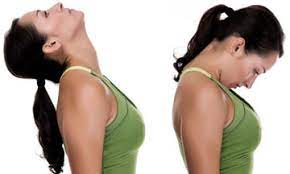
- Stand with your feet shoulder-width apart and maintain good posture with relaxed shoulders.
- Gently press your chin to your chest, keeping your head horizontal.
- Slowly and steadily begin to lift your head towards the ceiling keeping your spine in line.
- Keep lifting your head until you feel a nice stretch in the front of your neck and upper back.
- Hold the stretch for 10-15 seconds or as long as you feel comfortable.
- Return your head to the beginning position gradually.
- Repeat the exercise 5-10 times. It is important to remember to move slowly and smoothly during the exercise, without jerks or sudden movements.
2. The seated cervical extension exercise is another effective exercise for stretching and strengthening the neck and upper back muscles. This can be done as follows.
- Place your feet on the floor and sit on a chair with your back straight.
- Place your palms down on your thighs.
- Begin by tucking your chin toward your chest while maintaining a neutral spine.
- Slowly and steadily begin to lift your head up, looking up at the ceiling.
- Continue the movement until you feel a nice stretch in the front of your neck and upper back.
- Hold the stretch for 10-15 seconds or as long as you feel comfortable.
- Return your head to the starting position slowly.
- Repeat the exercise 5-10 times. Remember to perform the exercise in a controlled manner, without sudden or jerky movements.
3. Prone Cervical Extension exercise
The cervical stretch is a useful exercise to stretch and strengthen the neck and upper back muscles. This can be done as follows.
- Lie on a comfortable surface, such as a mat or exercise bench.
- Return your head to the starting position slowly.
- Make sure your neck is in a neutral position, not bent or extended.
- Slowly lift your head and chest off the ground, engaging your upper back muscles. Keep your eyes peeled.
- Continue to lift until you feel a slight stretch in the front of your neck and upper back. Avoid tension or excessive stretching.
- Hold the position for 10-15 seconds or as long as it feels comfortable.
- Slowly lower your head and chest back to the starting position.
- Repeat the exercise 5-10 times.
It is important to maintain control throughout the movement and avoid sudden or jerky movements.
4. Cervical Extension Stretch
The cervical stretch is a simple and effective stretch that targets the muscles in the front of the neck and helps improve flexibility and range of motion. This can be done as follows.
- Sit or stand straight with a straight back and relaxed shoulders.
- To start, gently press your chin to your chest.
- Slowly and gradually begin to tilt your head back, looking at the ceiling.
- As you tilt your head back, you should feel a stretch in the front of your neck. Remember to control the movement and avoid discomfort or pain.
- Hold the stretch for 15-30 seconds or until it feels comfortable.
- Slowly raise your head back to the starting position, pressing your chin to your chest.
- Repeat the stretch 2-3 times.
It is important to stretch the cervix carefully and avoid sudden or jerky movements.
Special Test For Cervical Extension
Some special tests may be done to assess the dilatation of the cervix and identify any restrictions or potential problems. Here are some commonly used cervical dilatation tests:
- Cervical dilatation range test:
- Straighten your back and relax your shoulders as you sit or stand.
- To start, push your chin towards your chest.
- Slowly and gradually begin to stretch your neck, raise your head, and look at the ceiling.
- Measure the cervical extension angle with a goniometer or visually assess the range of motion.
- Compare a range of motion with the normal range and assess limitations or differences.
2. Modified Sharp-Purser test:
- This test is used to assess the stability of the cervical spine, especially the atlantoaxial joint.
- A health professional generally performs the test.
- The patient sits with the chin slightly tucked in.
- The examiner places a hand on the patient’s forehead and applies a posterior force while maintaining contact with the C2 vertebra.
- After that, the patient is asked to stretch the neck.
- A feeling of excessive movement or “wear and tear” can be a sign of instability or subluxation of the atlantoaxial joint.
Summary
Cervical flexion and extension exercises and tests are important to assess and improve neck movement and function. Here is a summary of cervical flexion and extension:
- Cervical flexion: Cervical flexion involves bending the neck forward, bringing the chin towards the chest. Cervical flexion exercises include chin-ups in which you gently push your chin towards your chest while maintaining good posture. Cervical flexion stretches can help relieve tension in the neck and upper back. The cervical flexion range of motion can be assessed visually or measured with a goniometer.
2. Cervical Extension: Extending the cervix means bending the neck back while looking up at the ceiling. Cervical stretches include standing or seated cervical stretches where you gradually raise your head while maintaining proper alignment. Cervical stretches can help lengthen and strengthen the muscles in the front and upper neck. Cervical dilatation tests, such as the cervical dilatation test and the modified Sharp-Purser test, can assess the range of motion and stability of the cervical spine. Both cervical flexion and extension exercises and tests are important to maintain a healthy and functional neck.
FAQs
Cervical flexion: bowing the head forward towards the chest. Cervical expansion: bowing the head in reverse with the confrontation towards the sky. Cervical revolution: turning the head to the cleared out or the right.
Movement of the neck
Neck flexion is defined as “tilting your head forward” so that your chin is closer to your chest. The essential muscles included in this development are the longus colli, longus capitis, and infrahyoid. Neck extension/hyperextension alludes to the activity of moving your chin absent from your chest.
The extension breaks even with the movement within the sagittal plane, dorsally coordinated. Flexion is equal to the movement within the sagittal plane, ventrally directed.
Flexion: Flexion refers to the movement that decreases the angle between two body segments. For instance, when you bend your elbow, you are performing flexion as it decreases the angle between your forearm and upper arm.
Extension: Extension, on the other hand, is the movement that increases the angle between two body segments. When you straighten your elbow from a bent position, you are performing extension as it increases the angle between your forearm and upper arm.
How to do the cervical spine (neck) expansion workout. Sit, stand, or lie on the floor with both arms extended down by your side. Thrust both shoulders down. Tuck the chin into the chest. Expand the head back marginally whereas hoisting the chin to the ceiling, still keeping the arms down and back.
To perform the test, have your quiet in a supine-lying position and bring the cervical spine into maximal flexion. At that point turn your patient’s head to the cleared out and to the proper until you reach end-range, which is ordinarily come to a normal of 44° in sound people.

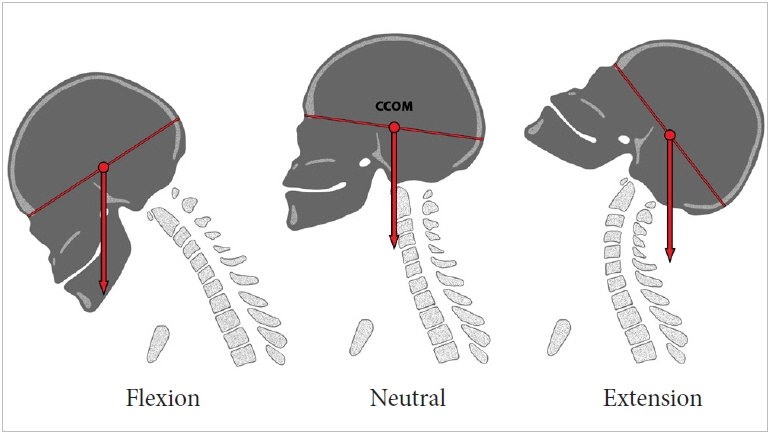
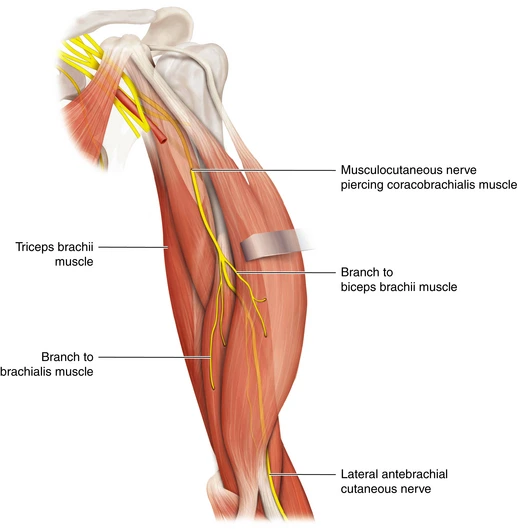
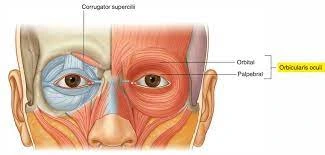
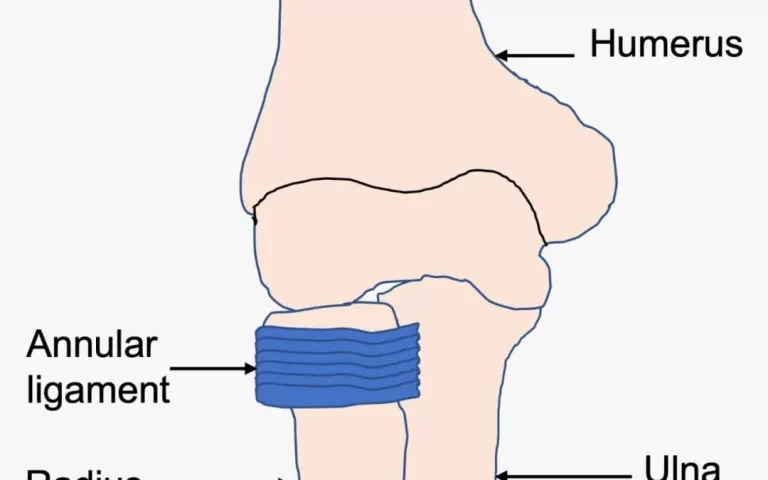
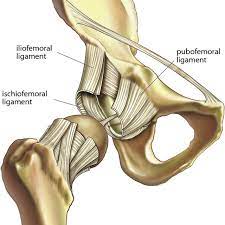
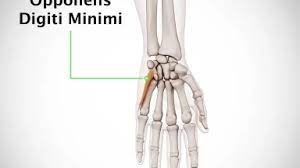
One Comment